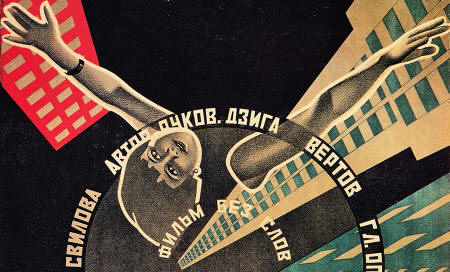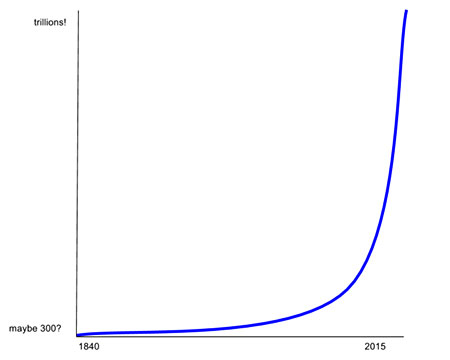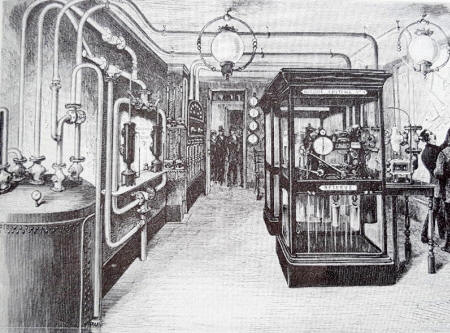|

by Matt Hackett
March 21, 2016
from
Medium Website

A capitalist
society requires a culture based on images.
It needs to furnish
vast amounts of entertainment in order to stimulate
buying and anesthetize the injuries of class, race, and
sex. And it needs to gather unlimited amounts of
information, the better to exploit natural resources,
increase productivity, keep order, make war, give jobs
to bureaucrats.
The camera's twin
capacities, to subjectivize reality and to objectify it,
ideally serve these needs and strengthen them.
Cameras define
reality in the two ways essential to the workings of an
advanced industrial society: as a spectacle (for masses)
and as an object of surveillance (for rulers).
Susan Sontag
"The
Image-World" (1973)
More photographs have been taken
in the past year than were taken on all film
combined.
More than 2 trillion photos were shared
last year, perhaps twice or more were captured and sit dormant on
phone hard drives. This says nothing of video.
Sontag wrote the above from the gentle upward slope of the
exponential curve of image-creation. She could probably feel the
slight breeze of acceleration, but her face would melt at the
velocity images have attained in the decade since her death.

The history of images
in one specious graph
Humanity's appetite for creating, sharing, and consuming images
appears insatiable.
To do some back-of-the-envelope math:
(Images perceptible per second) ×
(Waking seconds per day) × (Human population) = 10 × 57,600 ×
7,400,000,000 = 4.3 quadrillion
The upper limit on global image
consumption is 4.2 quadrillion per day, or 1.6 quintillion images a
year, give or take.
Facebook,
Google, and Twitter's ruthless
pursuit of dominance in video needs no further explanation.
Before images,
there was time
Humanity's appetite for time grew on a similarly aggressive curve.
Before the industrial revolution, it was uncommon for clocks to have
minute hands. Only a very select class could afford a private
timepiece until the 20th century.
Until the 1840s,
time was local and highly variable.
Each town set its own clock, from which private clocks would be
roughly set by hand. The time in Pittsburg might be 27 minutes
earlier than that in New York and no one much cared.
The railways made it possible to cross between these esoteric times
much more frequently than by horse or foot, and demand for time
expanded.
Initially, time was an industrial
substrate:
running efficient trains required
coordinated, well-publicized time across long distances.
The market for time exploded alongside
the growth of rail, and by the 1870s time was a hot luxury item.
In Paris, private residences, factories,
and watchmakers' shops could buy time:
a special clock outfitted with a
pneumatic synchronization mechanism was installed on the
premises and linked by underground tube to a central time pump
that dispensed time in the form of puffs of air.
Any ambitious gentleman subscribed to
this service, paying handsomely for time.

"Pneumatic Unification of Time: The Control Room"
circa 1880 from
Compagnie Générale des Horloges Pneumatiques,
Archives de la Ville
de Paris via Peter Galison's book
Einstein's Clocks,
Poincaré's Maps: Empires of Time
In the early 20th century, time became a
commodity.
World War I saw the introduction of
wristwatches to servicemen for coordinating trench warfare. The
digital computer and eventually the Internet required time on an
even more extreme scale. Without ubiquitous, precise (and to a
lesser degree accurate) time, none of the software protocols
involved in delivering this article to your screen would be
possible.
These days,
time is so common it is invisible.
Within reach of me right now are at
least ten milliseconds-precise clocks (iPhone, Android, Kindle,
stereo, desktop, laptop, oven, TV, cable box, digital watch), most
of which are kept accurate by syncing continuously, wirelessly, with
an atomic clock.
Still, our time-appetite is never sated:
Stock traders are
working hard against physical
barriers to coordinate their process below the millisecond.
Like images, a capitalist society
requires time.
In the 19th century, this ubiquity of time was far
beyond the realm of fiction. Time seems to us a true fact of the
world only because we have been steeped in so much of it for so
long.
The exponential expansion of time snuck
up on us.
Creating even
more images
By 2020, 80% of the world will be in possession of a physically
unlimited camera attached (mostly)
to an instantaneous global image distribution network.
This will also be the screen that allows
access the visual experience of the rest of the world.
Smartphones still require a complex series of time-consuming
gestures to create and distribute an image. An exponentially
increasing appetite for images, as a practical matter, requires
exponentially increasing creation. Wearable cameras will take care
of that.
Wearable image-creation technology is here today. An Alibaba search
turns up dozens of Shenzhen
manufacturers able to produce 1080p, Wi-Fi-enabled cameras from
commodity components for less than $50.
I have a few of these on my desk -
they're not polished, but were Apple (or Xiaomi) to take up the
project, a workable design and price point is easy to imagine.

Self-portrait as Glasshole
(Someday this will
read as kitschy fun,
not
reputation-destroying)
Google Glass was an abject failure
as a consumer device.
This may seem strange, the wearable
camera being by far its most well-implemented feature.
Glass failed because it was a tool for creating an order of
magnitude more images before they were ready to be consumed.
Skeptics rightly
asked,
"Are you taking a video of me right
now?" because there was no conceivable place to view such
images.
Our appetite hadn't grown large enough,
nor had the software to cater to it.
Beme, Snapchat, Facebook, and likely
dozens of others are building that consumption software right now.
(Technology for consuming images has always lagged behind technology
for creating them. Color television format wars spanned a decade,
and even that during a period when TV shows were still finding their
footing beyond imitating vaudeville.)
Infinite
vision
What happens when images are integrated as fully into our reality
as time?
We are approaching a world in which visual and auditory presence at
a distance - seeing as another, instantly - is not a rare luxury
good, but a basic assumption of society and industry.
The superpower of unbounded remote
vision is becoming mundane.
Nothing, of course, is inevitable. We could rein in our image
appetite before wearable cameras become necessary. But there are
just as many possibilities for human flourishing as there are for
malice in an infinite-image world. (We will see plenty of both.)
Susan Sontag's image-world is dark and instrumental:
images are class succor and control.
Logical enough from the perspective of
1970s photography, in which camera ownership and image distribution
were limited to the relatively powerful.
The era we are in the midst of, with a
profusion of cheap, miniature, wearable, networked cameras and
screens, is quite different.
As they become ubiquitous, I doubt we will think of these things as
cameras much longer. We hardly think of the tiny quartz wafers
inside every integrated circuit as "clocks," if we think of them at
all.
Cameras will become equally invisible
facilitators of remote vision.
The ubiquity of time makes stamping it with a moral judgment absurd.
We don't fear or reject
time, it is simply part of what is
admirable about our reality (instant navigation,
the Internet), and also part of
what is less so (irrational obsession over productivity, nuclear
warfare).
We have already become clocks. We will soon become cameras.
What we do with that power is up to
us...
|





